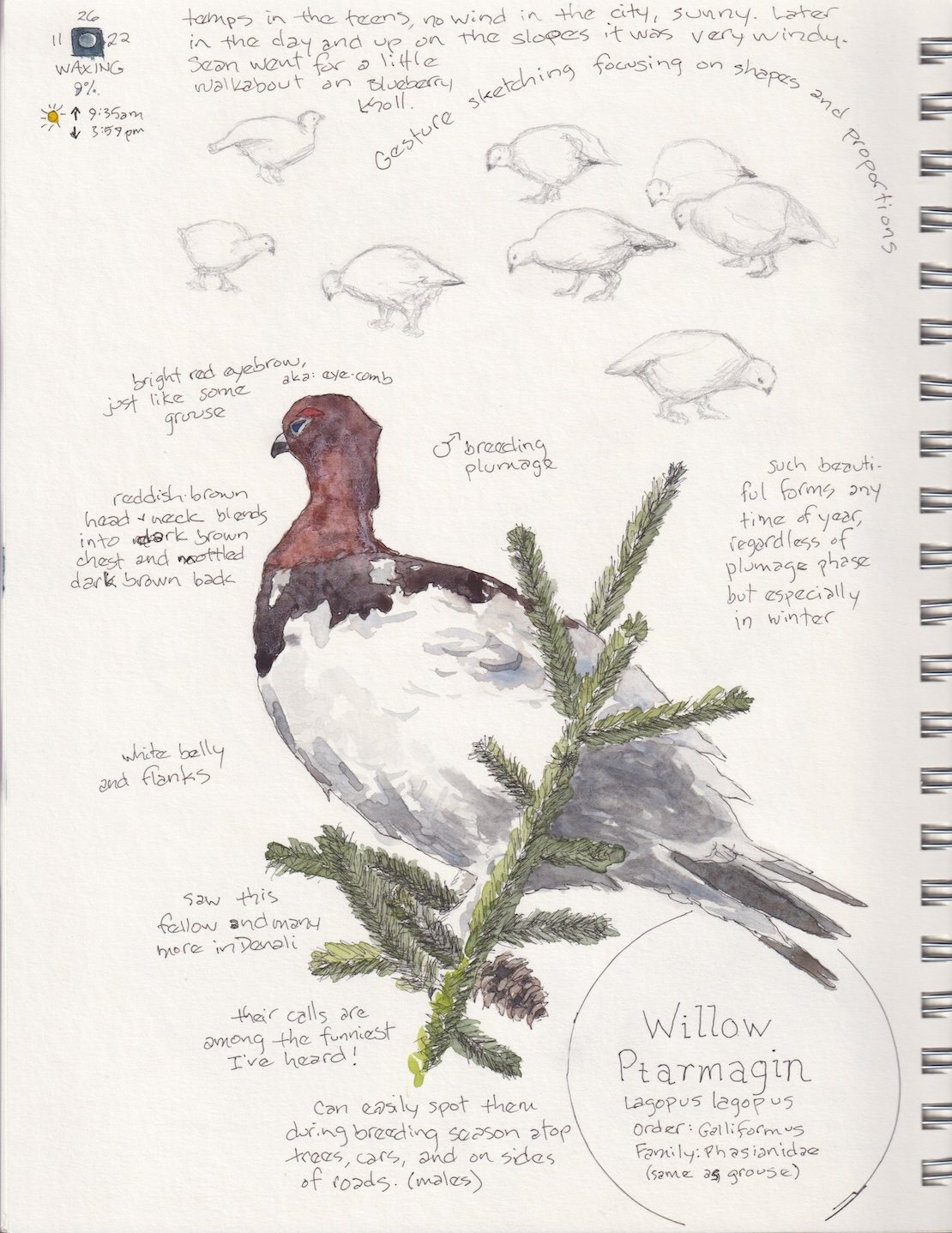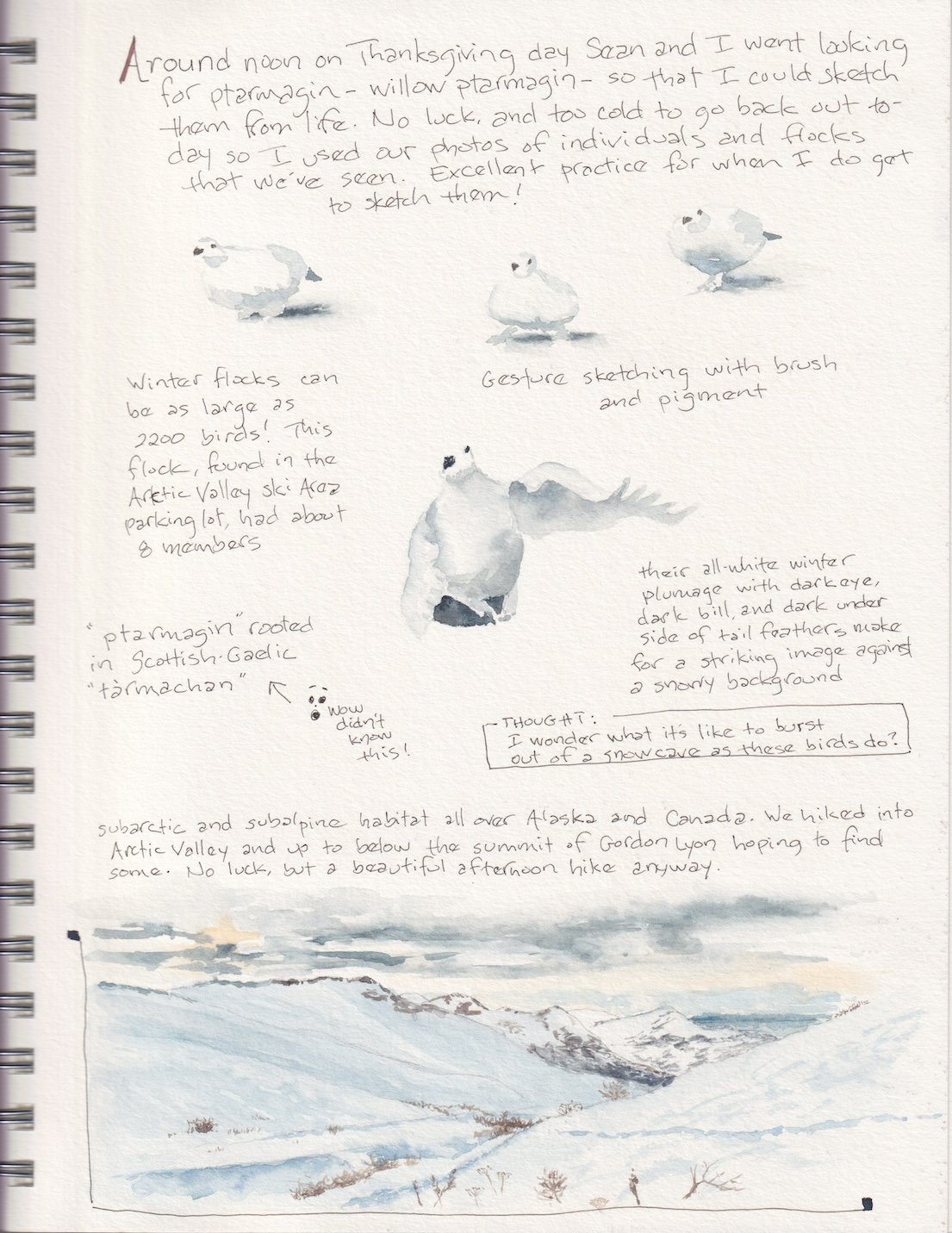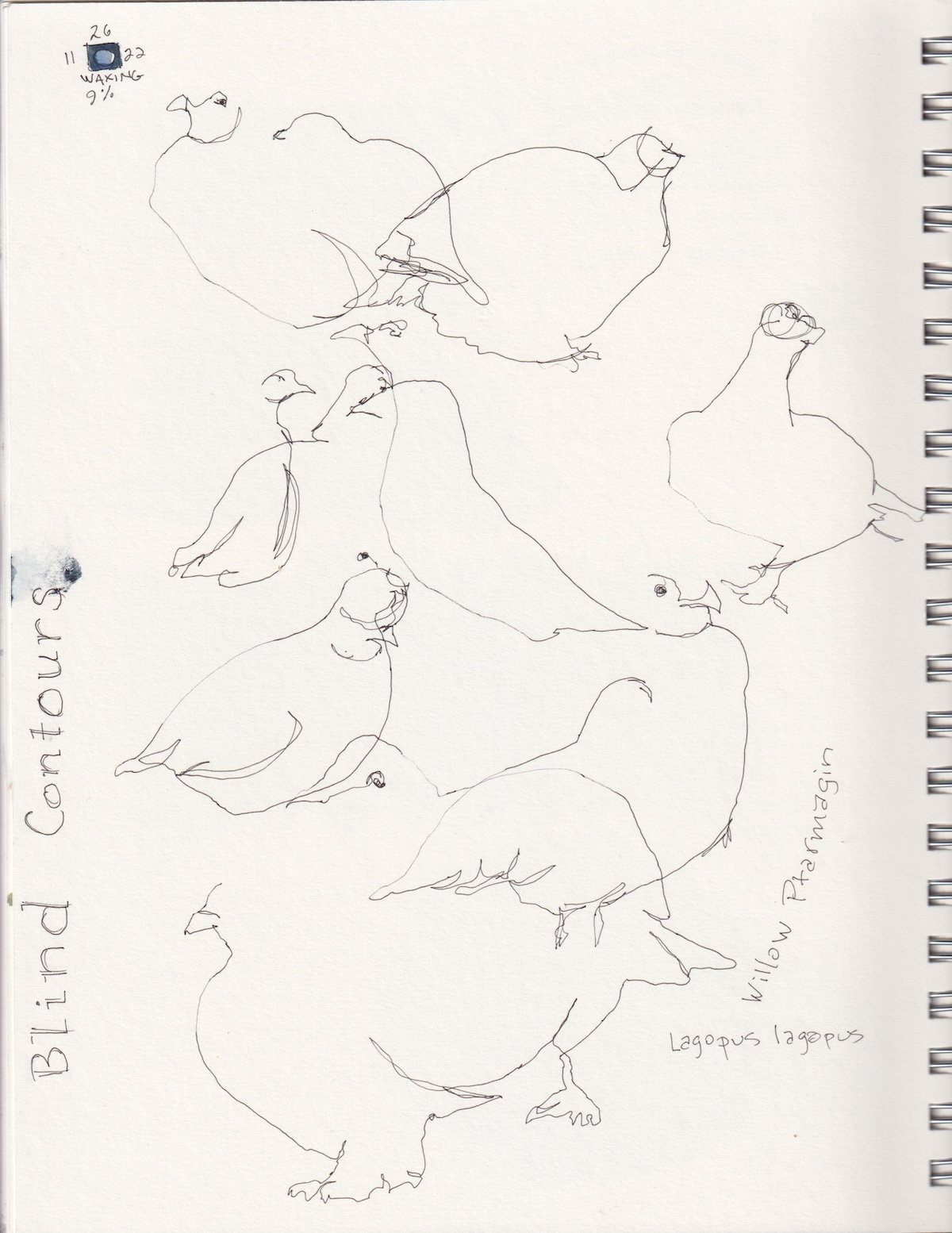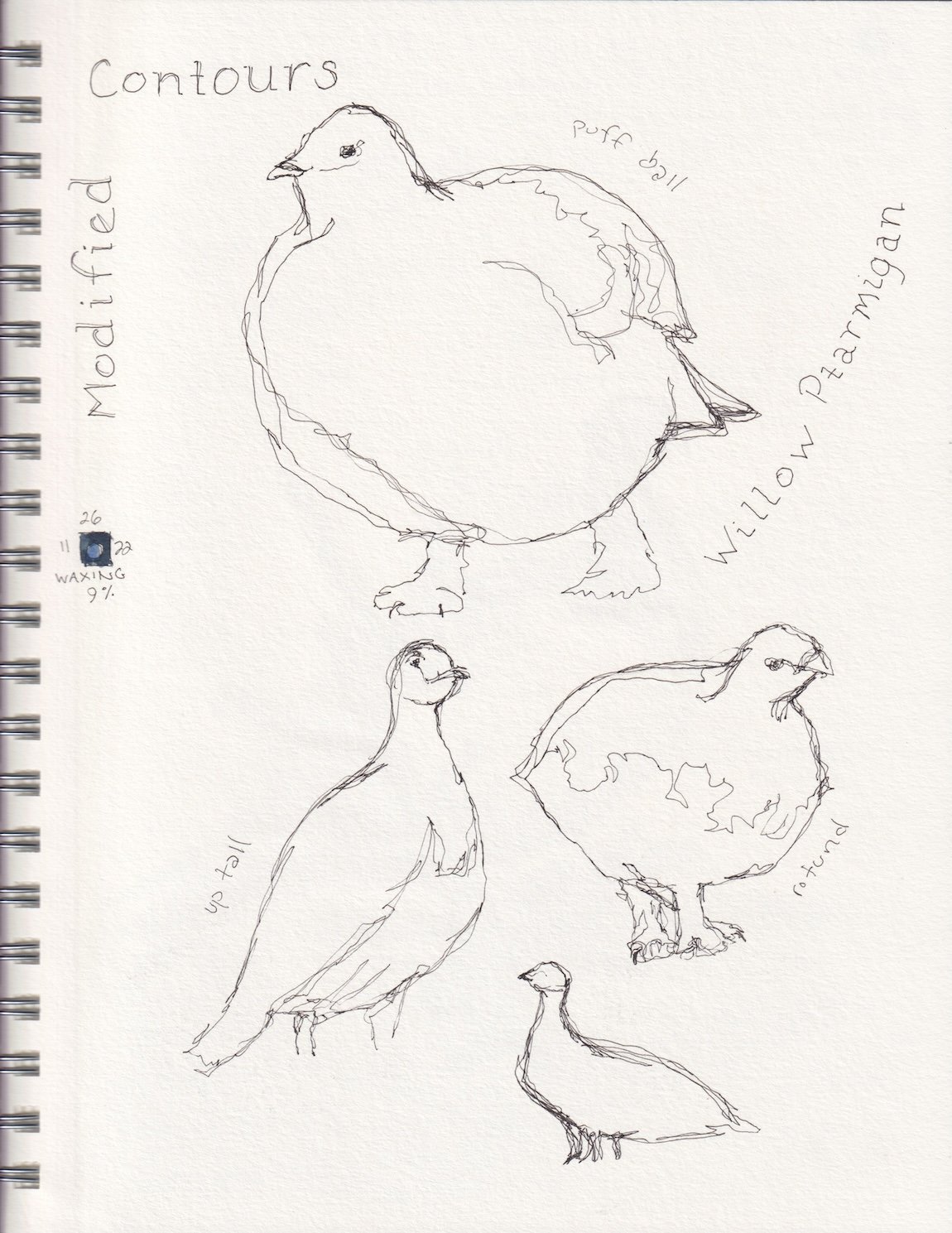Favorite Thing About Alaska?
Reposted from my November 2022 newsletter, edited for this platform.
On Thanksgiving Day my husband and I went in search of ptarmigan, Willow Ptarmigan (Lagopus lagopus) specifically. A little bird watching instead of bird eating.
My goal: to sketch them from life. A beautiful animal with a call that makes me chuckle pretty much every time I hear it, they peak my curiosity as a naturalist and artist.
Our search was unsuccessful but we had a wonderful afternoon hike in the mountains anyway.
I still wanted to make sketches of them but the next weather turned too icky to sketch outdoors so I used photographs, as I had seen them in Denali National Park and my husband saw them in Arctic Valley.
The importance and legitimacy of working from photographs is something I stress to my students as an excellent way to practice observation and drawing skills.
Beginning with traditional warm-up exercises, two pages quickly came to life with what looks like messy, incapable drawings. Called blind and modified contour drawings, these are very purposeful renderings.
With this method, the artist is not concerned with what happens on the paper but, rather with "seeing" all the nuances of an object as carefully as possible.
Contour drawing can, however, make the most charming works of abstract line art. I like how the eyes gracefully dot across the page in contrast to the movement of line, despite that they aren't necessarily in the correct spot on the bird heads.
The next step for me is usually to practice some gesture sketching. This method works up really quick drawings, meant to capture the "essence" of the object in movement.
To do this, one must first see the shapes and proportions and get those down on paper or canvas as fast as possible. If time allows, you can add further information about the object such as texture or shading.
These exercises are not easy ways to practice; they can be downright demoralizing at times.
But if you can shift your mind from always thinking about perfection or completion, you can then free yourself to play with the practice.
Purposeful Play.
Something I learned: ptarmigan and grouse are in the same family! What separates the two is that ptarmigan have stiff feathers covering their toes topside and underside, allowing them to tolerate more brutal climate conditions.
Once those methods have been done I move on to whatever kind of drawing I want to do... finished and polished or continue in sketch mode, playing around with making art based on those three practice methods.
As you might know by now, I really like adding a habitat sketch to my journal pages, to always remember where I was and, more importantly, as a way to connect plant or animal to a specific habitat as part of my ongoing learning.
I wonder...what's it like to explode out of a snow cave as these birds do?
I'm sure I'll never know, but I am thankful for the time I have in Alaska to be with this beautiful creature.






